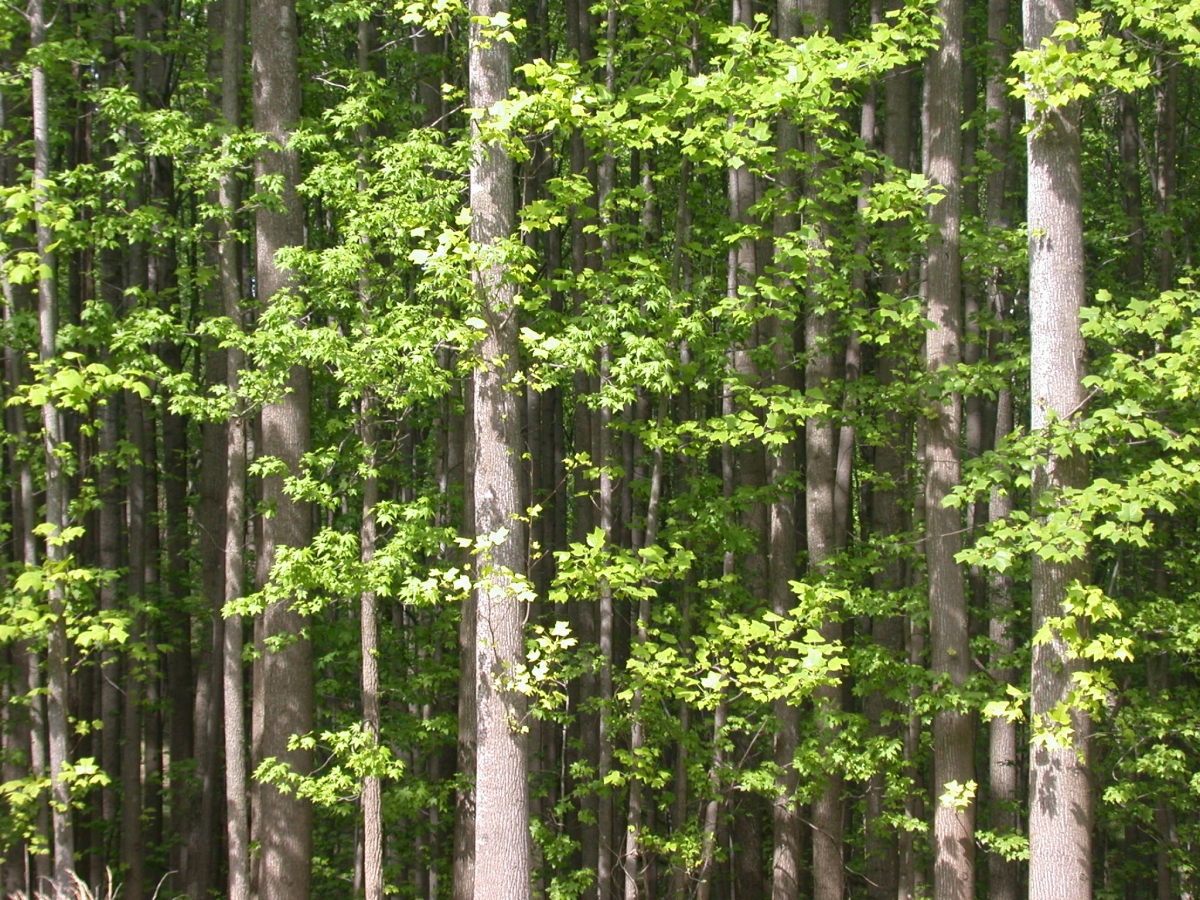Dendrometer Data to Explore

Photo credit: SERC Staff
The measurements
In the spring of 2010, before the start of the growing season, we installed dendrometer bands on four small to medium-sized trees in a young forest at SERC. All the trees are in flat locations on the same soil type. Details on these trees are given in Table 1. We measured the gap width of each dendrometer band 2-3 times a week, always in the morning, between about 7:30 and 9:00. In the later years we also measured the air and soil temperature using a simple oven thermometer. On every visit, we recorded all these data: gap widths, date and time, temperatures and any other observations of recent weather (especially rainfall). We continued these measurements over all the growing seasons through 2022. Both species of trees that we measured, Liriodendron tulipifera ('tulip poplar') and Liquidambar styraciflua ('sweetgum'), are typically found in young forests, can grow rapidly and are light-demanding. Note that in general the crowns of large trees are in more exposed light environments because they are taller.
Table 1. Details on the four intensively measured trees
| Tree number | 11 | 13 | 14 | 99 |
|---|---|---|---|---|
| DBH (cm) before growth in 2009 | 25.56 | 17.67 | 39.12 | 38.16 |
| Species | Liquidambar styraciflua | Liriodendron tulipifera | Liquidambar styraciflua | Liriodendron tulipifera |
| Crown light environment | shaded | shaded * | shaded | exposed |
*Neighbors of tree 13 were removed at the end of summer 2010, so its crown light environment changed from shaded to exposed.
Structure of the dataset
The dataset dendrometergaps0922.csv ( download) is a comma-separated file with 4 columns in the following order: the year, the day of the year, the tree number, and the gap width (in mm). Note that in some years the bands were replaced with new ones. This means that the gap width measured at the end of the previous year is not the same as the first reading of the current year – this is not a problem because we are primarily interested in the change in gap width. Always use the initial gap width for calculating the new circumference and DBH.
Some questions to explore with these data
Calculate the DBH at the end of the year for each tree and year.
Long-term patterns
Does the change in growth between years depend on differences in annual climate? Climate factors that might affect tree growth include temperature (the average as well as the minimum and maximum), the total precipitation and the intensity of drought conditions. If you want to explore the connections between estimates of growth (the total, the start and end dates) from the dendrometer observations and climate of this region, read What to Do With Climate Data.
Whole-season patterns
Does the annual change in DBH depend on the tree size or initial DBH or crown light environment? Recall that tree 13 saw a change in access to light starting in 2011.
Is the growth in one year related to the growth of the previous year?
Does growth start and end on the same dates for every tree and year? If not, why might that be?
Are there years when all the trees have a lot of growth and years when all grow poorly? Why should that be? What factors would you investigate?
Short-term patterns
It isn't necessary to take 2-3 measurements a week to estimate the annual growth. Is there any use to this greater resolution?
There are deviations both above and below the otherwise smooth patterns of growth. Do all the trees show these? Are the sizes of the deviations related? What is the significance of these departures? How would you investigate this effect?
Very short-term patterns
What if you measured the tree diameter numerous times over the course of a single day? (It's best to do this when the trees are growing rapidly). What is the pattern of gap width change? Is it the same for all trees? What factors do you think are influencing these patterns? Does the pattern provide a guide to the best time of day to make measurements?
